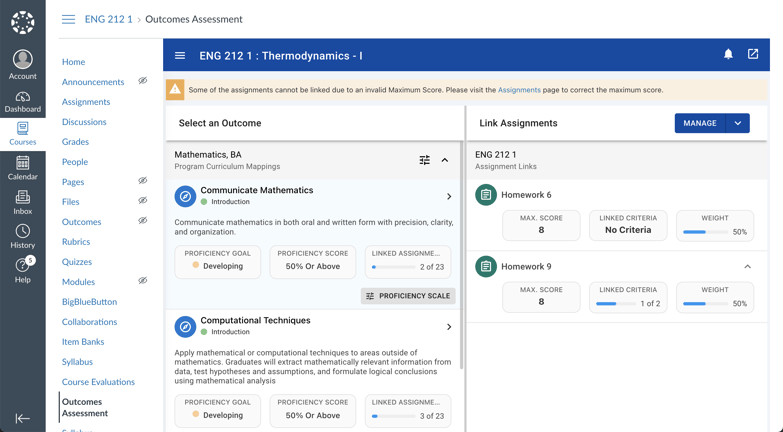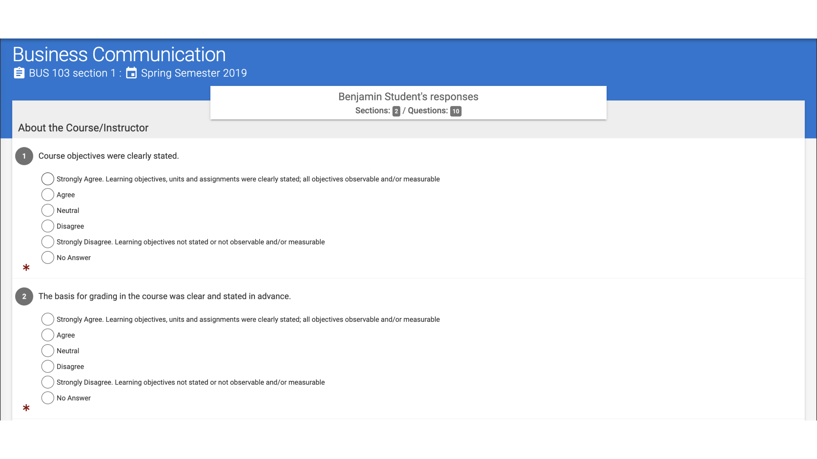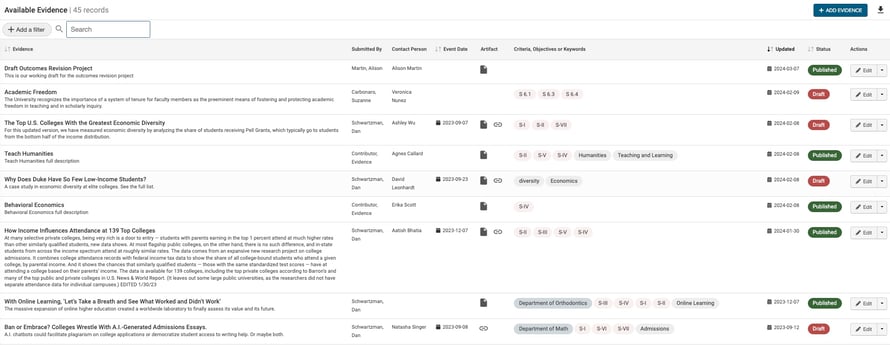Institutions across the country are continually seeking ways to better capture assessment data, bring uniformity to their process, and make the results efficiently and effectively available in a central location. For one top northeast university, identifying a partner best suited to help navigate through this process became necessary in order to reach their assessment and accreditation goals.
Led by their associate vice provost of accreditation with more than 30 years of experience in the assessment field, the university was looking to solve their growing need for collecting and implementing data for accreditation purposes, including evidence of improvement. From the onset, the goal was to identify a partner who could provide a useful, sustainable, and centralized way for the university to access, collect, and report assessment results to support continuous improvement institution-wide.
Three major pain points of a manual assessment process
Most institutions recognize, at some point, they need a better way to collect required data for accreditation, including information about student learning outcomes—alongside a desire to streamline the process involving faculty and administrators who support these efforts. The institution’s associate vice provost of accreditation identified three specific pain points leadership knew needed to be addressed:
No inclusive platform
While the institution had worked hard to maintain a very robust body of evidence, there was no platform by which the collection and, subsequently, the storytelling of accreditation data could be told. As the vice provost of accreditation points out, “We had a robust evidence bank that helped support accreditation, but for the actual work of writing the self-study and working on accreditation activities—we did not have a platform to support that.”
No centralized data collection
As a larger university, the institution had seven separate schools which were all gathering and reporting data differently. Without a central collection point—which an assessment management platform could provide—each school had crafted an individualized process for reporting on student learning outcomes.
No uniformity and consistency
As a result of lacking an accreditation and assessment platform, as well as the centralized data collection point and strategy this would provide, the institution’s method for accumulating, processing, and distributing data had come to exhaust time, money, and work resources.
Creating buy-in for an assessment management platform
The institutional leaders knew an accreditation and assessment platform held the answers to these pain points; however, there were many on the market—and the team also recognized the importance of getting faculty and staff on-board. The team saw this as a great opportunity to create buy-in by working with an internal assessment committee comprised of representatives from all seven schools to assess the potential partners. The committee researched and vetted multiple vendors before identifying that HelioCampus was the best fit for the institution’s needs presently, as well as in the future.
As the vice provost of accreditation recalls, “We brought the committee in to see the solutions as a group, and the group decided that HelioCampus was the most user-friendly, intuitive platform.”
Five key benefits of partnering with HelioCampus
Through the very thorough vetting process, the committee recognized HelioCampus offered several solution advantages over other competitors being considered. Five specific benefits were noted as setting HelioCampus above the rest:
Seamless LMS integration
As noted above, buy-in from faculty and staff was an essential piece of moving to a dedicated accreditation and assessment platform. With HelioCampus, the university wasn’t required to upend faculty’s course-planning processes or require them to learn an entirely new workflow out of a new system. The HelioCampus platform integrated seamlessly with the institution’s LMS—even allowing for retroactive data additions.

The university’s director of online learning adds, “Our faculty could collect the data the same way they were doing before HelioCampus, which was really the key, I think. We didn’t change their business process.”
This process also provided faculty with access to student data they previously were unable to view, along with deeper visibility into student performance outcomes at both the programmatic and institutional level. Additionally, administrators and departmental chairs benefit from increased efficiencies. Rather than compiling individual reports from each faculty member, chairs can now simply pull the aggregated data straight from HelioCampus’s platform and break it down incrementally for deeper data dives.
Data collection and analysis quality
The HelioCampus platform brought standardization to the seven different schools’ data collection and analysis processes. This consistency—across all schools—is a welcome shift from the prior “each-their-own” strategy that could differ drastically, even on common tools like ranking instruments. In addition to streamlining the results analysis, the university can also leverage the platform’s hierarchy structure so colleges, departments, and programs can ask specific questions to support their improvement and accreditation requirements. The institution reports 90 percent of course evaluations exist on the HelioCampus platform and more are being added every year.

Syllabi consistency
Due to state requirements, every syllabus throughout the institution must include seven mandated components. Utilizing HelioCampus’s templates, faculty and staff can build syllabi with all required components already included. In addition to increasing efficiency and meeting state standards, the institution has seen student satisfaction ratings increase due to the consistency of syllabi across courses.
Effective and efficient self-study
Rather than “reinventing the wheel” every time accreditation comes around, the HelioCampus platform allows for all accreditation evidence to be tagged, stored, and saved—in one central place. Not only does this reinforce access and data accuracy, this also helps staff working on self-studies across the institution to 1) spot elements which otherwise may have been missed, 2) search for specific evidence within the site-wide documentation library, and 3) leverage relevant information from already-collected data.

The director of online learning notes, “The platform saves time by preventing people from having to comb through the archives of all of the university’s news reports. In the past, if I were looking for evidence for DEI, I would think, ‘Oh, we hired a new diversity officer. But when did that get announced?’ And I’d have to go through all the archives to find it.”
Curriculum mapping
HelioCampus’s curriculum map visualizations allow faculty, staff, and other institutional leaders to identify possible programmatic or course gaps in order to continually improve curriculum coverage and student learning outcomes.
The associate provost of accreditation expounds, “When you use a tool that visualizes your curriculum map so beautifully—color-coded, showing where a concept was introduced and where it was reinforced—then you might see, ‘Oh, you know, we really never did reinforce that concept. Let’s go back and put it in.’ Similarly, if students are not achieving at the expectation, it allows you to make adjustments.”
A full university process
Shifting to HelioCampus’s Assessment & Credentialing platform has provided the university with a renewed ability to capture, process, and report on assessment data like never before to support accreditation and other improvement initiatives.
The leadership team has also encouraged full autonomy in this transition process. The university’s director of online learning explains, “We didn’t say, ‘Everybody has to give up their current system and move to HelioCampus.’ We helped them move when they were ready to move.” Adds the associate provost of accreditation, “When someone realizes, ‘Wow, this is helpful to me, to my department, to my course,’ then they will want to use it. That, to me, is much more effective than trying to mandate change from the top down.”



